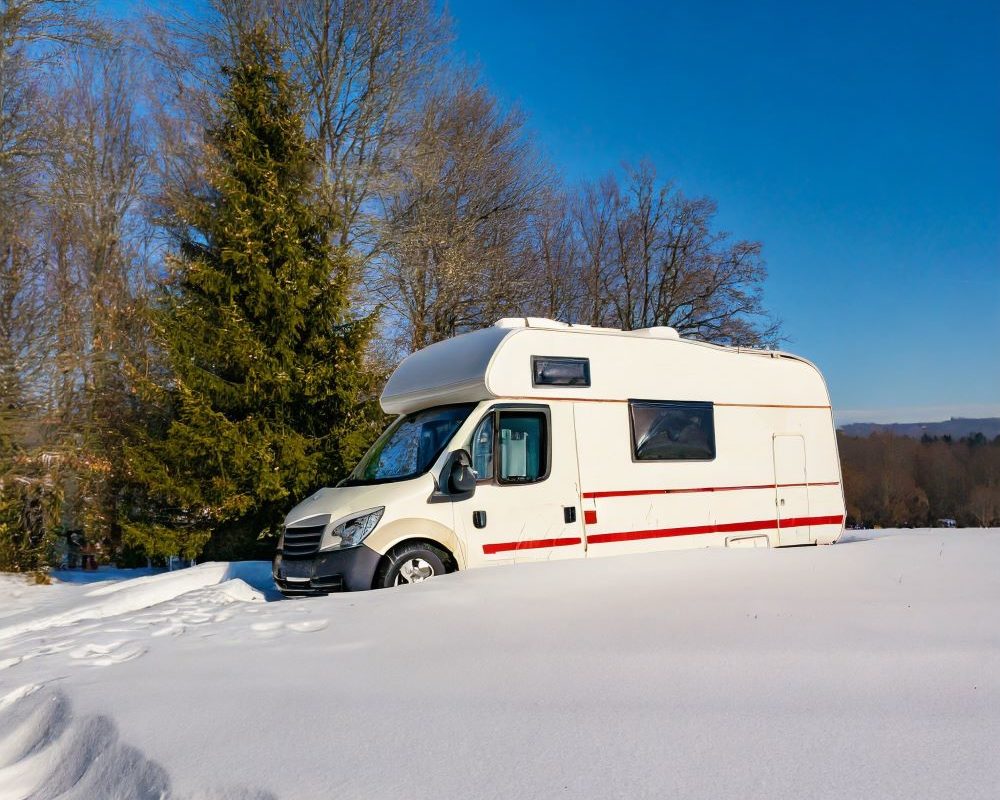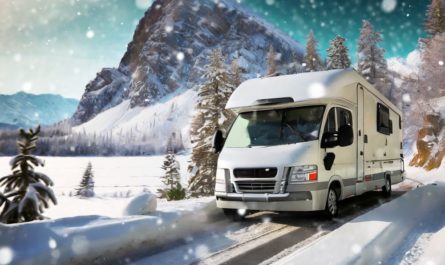Reasons to Dig Your Motorhome Out of the Snow
Winter can be a challenging time for motorhome owners. As the snow piles up outside, it can be tempting to leave your motorhome in storage until the warmer months arrive. However, there are several important reasons to dig your motorhome out of the snow and ensure it stays in good condition throughout the winter. From maintenance and security to opportunities for winter travel and enjoying the great outdoors, there are plenty of compelling reasons to keep your motorhome active during the winter season.
How to Prepare Beforehand
1. Gather all necessary materials such as books, articles, and any other resources related to the topic.
2. Create a timeline outlining when each task needs to be completed before the event or presentation. This can help manage your time effectively.
3. Familiarize yourself with the topic by conducting thorough research and taking notes.
4. Set aside dedicated time for preparation. Choose a specific time of day or week to focus on preparing for the upcoming event or presentation.
5. Create a checklist to ensure all necessary tasks are completed. This can include tasks such as outlining key points, creating visual aids, and practicing the presentation.
6. Review and revise your materials as needed to ensure they are thorough and accurate.
7. Plan for any logistical needs, such as setting up technology or booking a space for the event.
By following these key steps for preparation, you can ensure that you are fully ready for the event or presentation, and can confidently share your knowledge on the topic at hand.
Essential Tools and Equipment
Ensuring you have the essential tools and equipment on hand is crucial for any job or project. From DIY home improvements to professional trade work, having the right tools can make all the difference in the quality and efficiency of your work. In this article, we will explore the essential tools and equipment needed for various tasks, including woodworking, automotive repairs, plumbing, electrical work, gardening, and more. Whether you’re a seasoned professional or a novice DIY enthusiast, knowing which tools are necessary for the job at hand is essential in ensuring that you have everything you need to get the job done right. We will discuss the basic tools that every toolbox should contain, as well as the specialized equipment necessary for specific tasks. So, let’s dive into the world of essential tools and equipment and equip ourselves with the knowledge needed to tackle any project with confidence and precision.
Snow Shovels
Different types of snow shovels available for purchase include ergonomic shovels with bent handles for better posture, heavy-duty aluminum shovels for durability, and combination shovels with a snow pusher and a scoop for various tasks such as clearing paths and managing ice. The Spear and Jackson Grain Shovel is a durable and sturdy option ideal for heavier snow and ice, with a comfortable handle for prolonged use.
Keeping a snow shovel in your vehicle is essential for emergencies, as it can help clear snow from around your car and potentially assist others in need. It is also important for being prepared during winter weather, especially in areas with heavy snowfall.
When building a quinzhee, using the right shovel is crucial. The traditional scoop shovel with a narrow mouth and deep back is effective for moving snow and shaping the quinzhee due to its design and durability.
In conclusion, having the right snow shovel for the task at hand is crucial for managing snow and ice effectively. From emergency preparedness to building structures, choosing the right shovel can make the job much easier and more efficient.
Snow Brooms
Snow brooms are a convenient tool for clearing snow from vehicles and other surfaces. They come in various types, including extendable or retractable handles, soft or stiff bristles, and integrated scrapers for ice removal.
Using a snow broom to clear snow from vehicles and surfaces is much quicker and more efficient than using a shovel or brush. The ergonomic design and lightweight construction make it easy to use, reducing strain and fatigue. Snow brooms are also designed to be gentle on car paint and surfaces, minimizing the risk of scratches or damage.
When looking for a quality snow broom, consider features such as a telescoping handle for reach, durable bristles for effective snow removal, and a built-in ice scraper for added convenience. It’s also important to choose a broom with a comfortable grip for extended use.
To effectively clear snow with a snow broom, start by gently sweeping the snow off the vehicle or surface, using the bristles to push the snow away. Use the ice scraper to remove any stubborn ice patches. Work systematically to ensure all snow is cleared, and be mindful of any delicate surfaces to avoid damage.
Overall, snow brooms are a versatile and efficient tool for clearing snow from vehicles and surfaces, offering convenience and ease of use compared to other snow clearing tools.
Ice Scrapers
There are several types of ice scrapers available for clearing snow and ice from your vehicle.
1. Windshield scrapers are handheld tools with a flat, sharp edge specifically designed for scraping ice from your windshield. They are usually compact and easy to store in your vehicle.
2. Snow brushes with built-in scrapers combine a brush for removing snow with a scraper for removing ice. This multipurpose tool is convenient for clearing off both snow and ice from your car.
3. Combination snow broom and ice scraper tools offer a larger brush for sweeping snow off your car, along with a scraper for removing ice from your windshield. This type of tool can be useful for efficiently clearing your entire vehicle of snow and ice.
4. Telescoping ice scrapers have adjustable lengths, allowing you to easily reach across large windshields or roofs. They can be extended to reach areas that are difficult to access with traditional ice scrapers.
Each type of ice scraper may feature durable materials for long-lasting use, ergonomic handle designs for comfortable gripping, and adjustable lengths for reaching across large windshields or roofs. These features provide convenience and ease of use when clearing ice and snow from your vehicle.
Snow Chains
When selecting snow chains for your vehicle, it is important to first check the legal requirements in your area. In many places, snow chains are required during certain weather conditions, and failure to comply can result in fines.
For frequent use, it’s crucial to invest in a premium set of snow chains. High-quality chains are more durable, provide better traction, and are easier to install and remove. They also come with a warranty and faster setup, saving you time and effort in the long run.
When choosing the correct size, refer to your vehicle’s owner’s manual or check with the manufacturer. Using the wrong size can damage your tires or cause the chains to slip off, increasing the risk of accidents. Properly fitting snow chains provide the best performance and safety.
To use snow chains, park on a flat surface and engage the emergency brake. Install the chains on the drive wheels following the manufacturer’s instructions. Drive the vehicle forward a few feet and double-check the chains are secure before hitting the road. Remember to adhere to speed limits and remove the chains when no longer necessary.
Winter Tyres or Snow Tyres
Winter tyres and snow tyres are often used interchangeably, but there are differences between the two. Winter tyres are designed to perform well in cold temperatures, not just snowy conditions, while snow tyres are specifically designed for driving in snow and ice. In many European countries, including Germany, Austria, and Switzerland, there are legal requirements for the use of winter tyres during specific time periods. For example, in Germany, winter tyres are mandatory from October to April, while in Austria, they are required from November to April.
When it comes to winter van life parking, there are potential risks and challenges, especially in snowy conditions. It’s important to find safe and secure parking spots, clear of snow and ice, to prevent sliding or getting stuck. Tips for safe parking in snowy conditions include using winter tyres, parking on level ground, and avoiding parking too close to the road to minimize the risk of an accident.
Overall, choosing the right tyres and parking safely are essential for navigating the challenges of winter van life in European countries.
Steps to Take During the Digging Process
When it comes to the digging process, it’s important to take necessary precautions to ensure the safety of everyone involved and to avoid causing damage to property or utilities. Below are some important steps to take during the digging process to effectively and safely complete the task. Whether digging for a new construction project, landscaping, or any other purpose, these steps will help you stay organized, prepared, and most importantly, safe.
Clear Away Fresh Snowfall with a Shovel or Broom
When clearing away fresh snowfall from your vehicle, it is important to use a shovel or broom to ensure that all the snow is removed, especially from around the wheels and underbody. Using a traditional scoop shovel with a narrow mouth and deep back is effective for this task, as it allows you to easily scoop and remove the snow from the vehicle. If you don’t have a shovel, you can also use removable cup holder inserts, small rear floor mats, or the wrench for the spare tire to help clear the snow.
Start by clearing the snow from the windows and roof of the vehicle, then work your way down to the hood, trunk, and finally the wheels and underbody. Make sure to also remove any snow that may have accumulated around the headlights, taillights, and side mirrors.
By following these instructions and using the right tools, you can effectively clear away fresh snowfall from your vehicle, ensuring that it is safe to drive and preventing any potential damage from snow and ice accumulation.
Use Ice Scrapers and De-Icers on Frozen Surfaces
When faced with frozen surfaces on your car, it’s important to have the right tools to effectively remove the ice and snow. Start by using an ice scraper to clear off the ice from your windshields, windows, and mirrors. Make sure to scrape in a downward motion to avoid scratching the surfaces.
Next, if the ice is particularly stubborn, you can use a commercial de-icer to help melt the ice. Simply spray the de-icer onto the frozen surfaces and wait a few minutes for it to take effect. If you don’t have a commercial de-icer on hand, you can create your own solution using a 3:1 mixture of vinegar and water. Alternatively, a mixture of rubbing alcohol and water can also be effective for de-icing.
In summary, when dealing with frozen surfaces, start by using an ice scraper to remove any ice or snow, then use a commercial de-icer if available. If not, you can create your own de-icing solutions using vinegar and water or rubbing alcohol and water. These methods will help ensure clear and safe visibility while driving in winter conditions.
Fit Snow Chains if Necessary for Added Traction
When fitting snow chains for added traction in snowy road conditions, it is important to ensure that you have the correct size and a premium set from a reputable brand like Pewag to prevent any potential issues. Before fitting the chains, use a snow shovel to clear the area and ensure that there is no debris or obstacles in the way. Once the area is clear, carefully place the snow chains over the tires and ensure that they are secure and snugly fitted. It is important to follow the manufacturer’s instructions for the specific snow chains you are using, as each set may have slightly different fitting methods. Once the snow chains are securely fitted, drive at a slow and steady pace to ensure that they are working effectively. Remember to remove the snow chains once you are no longer driving in snowy conditions to prevent damage to the tires and chains. By following these steps and using the correct size and premium set of snow chains, you can effectively improve traction in snowy road conditions and drive more safely.
When You’re Stuck in a Ski Resort Parking Spot
Stuck in a ski resort parking spot can be frustrating, but it’s important to stay calm and think through your options. Whether you’re dealing with icy conditions, a dead battery, or a car that won’t start, there are steps you can take to safely extricate yourself from the situation. From using traction mats and shovels to asking for help from resort staff or fellow skiers, there are several strategies to try before resorting to calling for professional assistance. With some ingenuity and a bit of persistence, you can navigate the challenges of being stuck in a ski resort parking spot and get back to enjoying the slopes without a hitch.
Check If You Have Immunity from Parking Fines
When renting an RV, it is important to understand the terms and conditions of the rental agreement, including whether or not it includes immunity from parking fines. Some rental companies, such as Cruise America, may have specific policies regarding parking fines and the use of chains on their motorhomes. To check for this information, carefully review the terms and conditions of your rental agreement. Look for any clauses or language that address parking fines and any potential immunity from them. If you are unable to find this information in the rental agreement, it is best to contact the rental company directly for clarification. They will be able to provide you with specific details about their policies and any potential immunity from parking fines. By reviewing the rental agreement and reaching out to the rental company, you can ensure that you are fully informed about any potential liabilities regarding parking fines while using the RV.
Find an Appropriate Spot Instead of an Inappropriate One
When searching for a suitable spot to work or study, there are several criteria to consider. Firstly, the area should be free of obstacles or distractions, providing a clear and clutter-free space to focus. Additionally, good lighting is essential to prevent eye strain and maintain alertness. The spot should also offer the necessary equipment, such as a desk, chair, and power outlets, to support productivity.
Choosing a conducive spot is crucial for maintaining focus and productivity. A quiet environment can significantly reduce distractions and help to concentrate on the task at hand. Comfort is also important, as discomfort can lead to physical distractions and decrease motivation. By selecting an appropriate spot, individuals can create an environment that fosters concentration and efficiency.
In conclusion, finding an appropriate spot involves considering criteria such as lack of obstacles, good lighting, and necessary equipment. It is vital to choose a spot that is conducive to focus and productivity, which usually means a quiet and comfortable environment. By prioritizing these factors, individuals can create an ideal space for getting work done efficiently.



